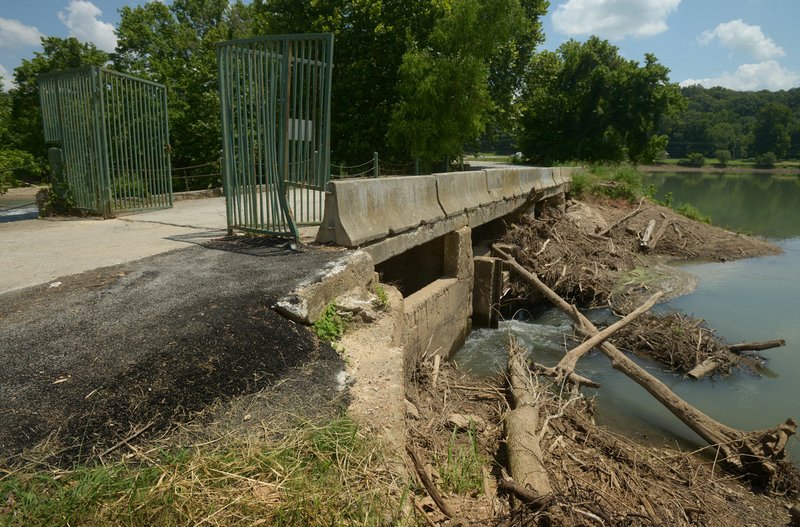BENTONVILLE -- Removing the Lake Bella Vista dam would improve water quality, restore the ecological system and cost less than rebuilding it, according to a biologist with the U.S. Fish and Wildlife Service.
Melissa Lombardi spoke Monday with David Wright, Bentonville Parks and Recreation director; Erin Rushing, executive director of NWA Trailblazers; and six members of the Friends of Little Sugar Creek.
Meeting information
A meeting regarding the Lake Bella Vista dam issue will be at noon Thursday in the community room of the Bentonville Police Department at 908 S.E. 14th St.
Source: Staff report
The lawsuit
The Friends of Little Sugar Creek filed a lawsuit against the U.S. Corps of Engineers and Federal Emergency Management Agency to stop the Lake Bella Vista dam from being rebuilt. It was dismissed in April because the construction permit to rebuild the dam expired, nullifying the $2.7 million Emergency Management committed to the project.
Source: Staff report
The Friends of Little Sugar Creek is a nonprofit organization advocating for the dam to be removed and Little Sugar Creek restored. The city had plans to replace the failed dam, but is now considering its options, including rebuilding or removing the dam or letting the stream flow past a man-made pond.
The Association of State Dam Safety Officials declared the dam failed in March 2008 after it was topped during a storm. It was topped again by flooding in 2011, 2013 and December 2015. The lake has been drained and dam gates have remained open since the last flooding.
Most dams have a lifespan of about 50 years. The Lake Bella Vista dam is about 100 years old.
"We're on life support there," Lombardi, the biologist, said.
Most watershed acreage to lake acreage ratios in the Ozarks are 100-to-1. Lake Bella Vista's is 2,550-to-1, Lombardi said, explaining that causes more nutrients to run into the lake. The nutrients concentrate to high levels that alter the ecosystem.
Impounded and slow-moving water creates poor conditions for sensitive species and better conditions for algae blooms, she said. Flowing water would bring back a healthier ecosystem.
The impervious surface within the watershed is going to increase as development continues, said Ron Miller, Friends member. The increased development means more pavement and less places for water to absorbed.
"This is going to be a growing problem with the urbanization of the area," he said, adding flooding is going to get worse during large rain events.
Lombardi's presentation included seven possible government funding sources for dam removal.
Ken Lenard, Friends member, suggested private money may also be available from outside the community, but didn't provide details. He also suggested FEMA may have some available money.
"They have appropriated money that if it doesn't get spent, they're going to lose it," he said.
The average cost to remove a dam in Pennsylvania, a leader in the country for removing dams, is $75,000, Lombardi said. The U.S. Fish and Wildlife Service Fish Passage Program's Maintenance Action Team has removed them for $25,000.
Those costs don't include stream restoration.
"It's a big decision. It's not a big project," Lombardi said.
Wright said it was helpful for him to see possible funding options. The City Council will have to make the final decision.
"When we put this in front of the council, the dollars and cents have to make sense," he said. "I think we're on the right track."
NW News on 07/18/2017

